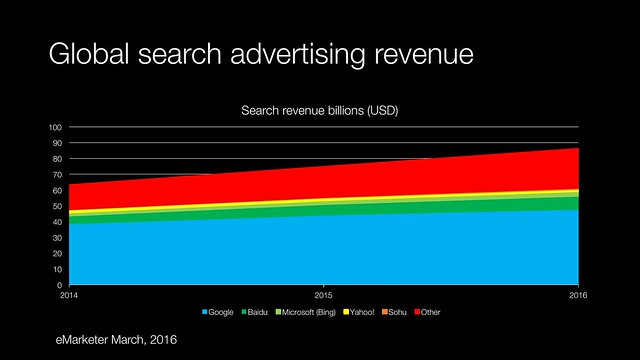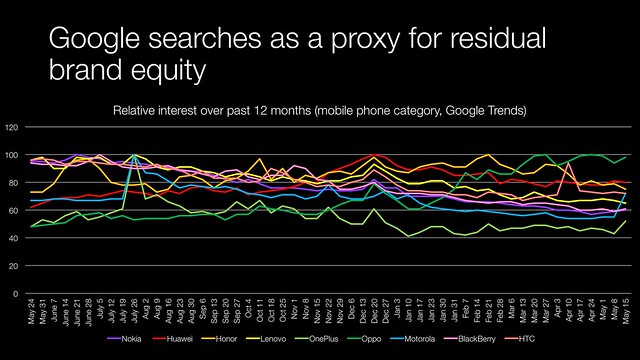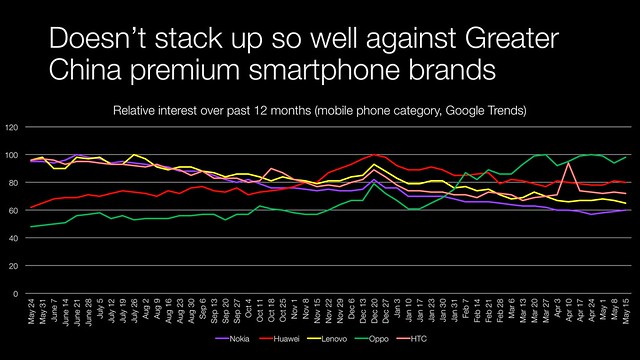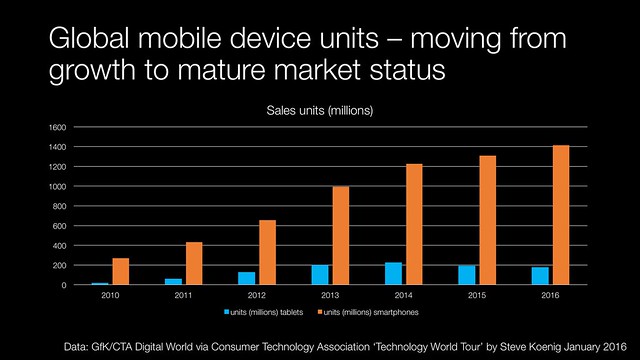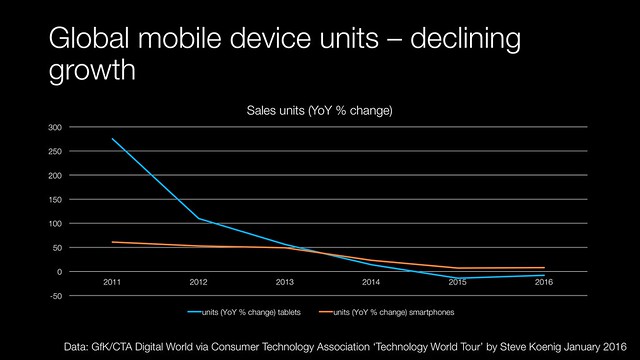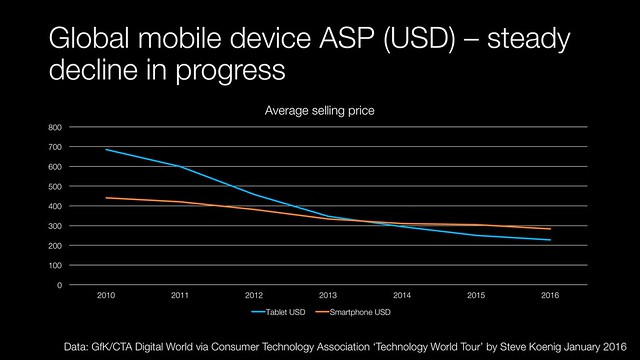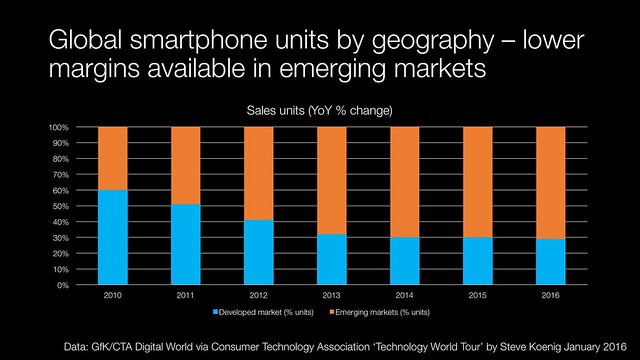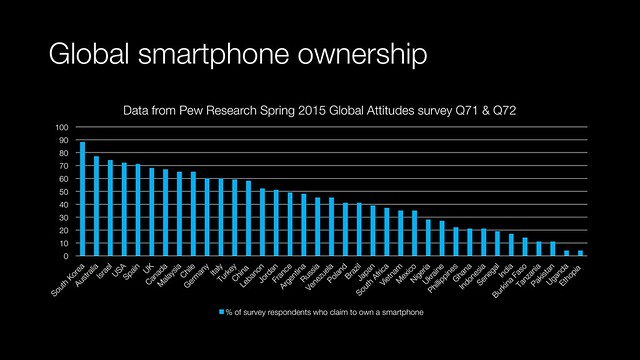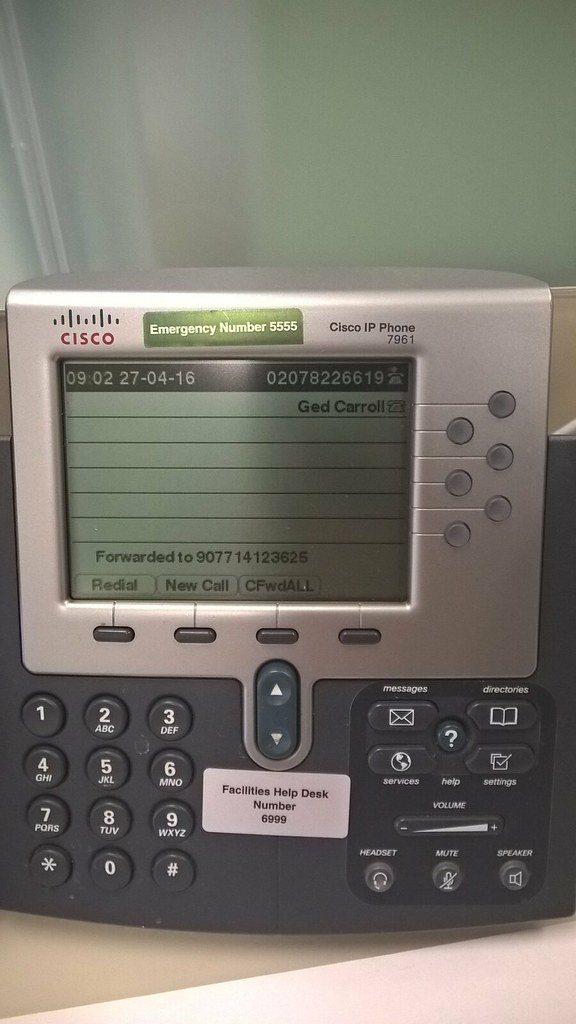2016 Mary Meeker’s annual presentation on internet trends is a tradition within the technology sector that goes back more than two decades. Meeker used to be a sell side analyst during the dot com boom and was known as a cheerleader for the sector. Unlike Harry Blodget she didn’t come unstuck with the subsequent bust.
More recently Meeker moved to Silicon Valley and took a job with a VC firm. Hence the reason why the 2016 Mary Meeker presentation is done in conjunction with KPCB (Kleiner Perkins Caufield Byers).
The key themes explored in the presentation this year include:
- Mobile – a favourite for a number of years, but with over half of all internet sessions being done on a smartphone or similar it was inevitable that it would take up a substantial amount of the presentation. Mobile is maturing which is shown in the decline in growth rate of the sector this year. Android is picking up market share due to its cheaper handsets but still lagging behind in share of profit
- Declining global economic growth. Global debt has risen higher and faster than global GDP. Population growth is also slowing and ageing. Meeker thought that India may be the bright spot due to its demographics, but this assumes that it can get over its structural issues and take advantage of its young population. That is probably overly-optimistic because of rising hindu nationalism
- Online advertising – efficacy still a serious issue to be dealt with. Consumers hate it hence ad blocking.
- Social: Meeker saw the big factors being video, images and messaging
- Voice: the rise of voice driven assistants in the home and on mobile devices. The decoupling of China versus the rest of the world is apparent in this new category.
Here is the latest iteration for 2016

